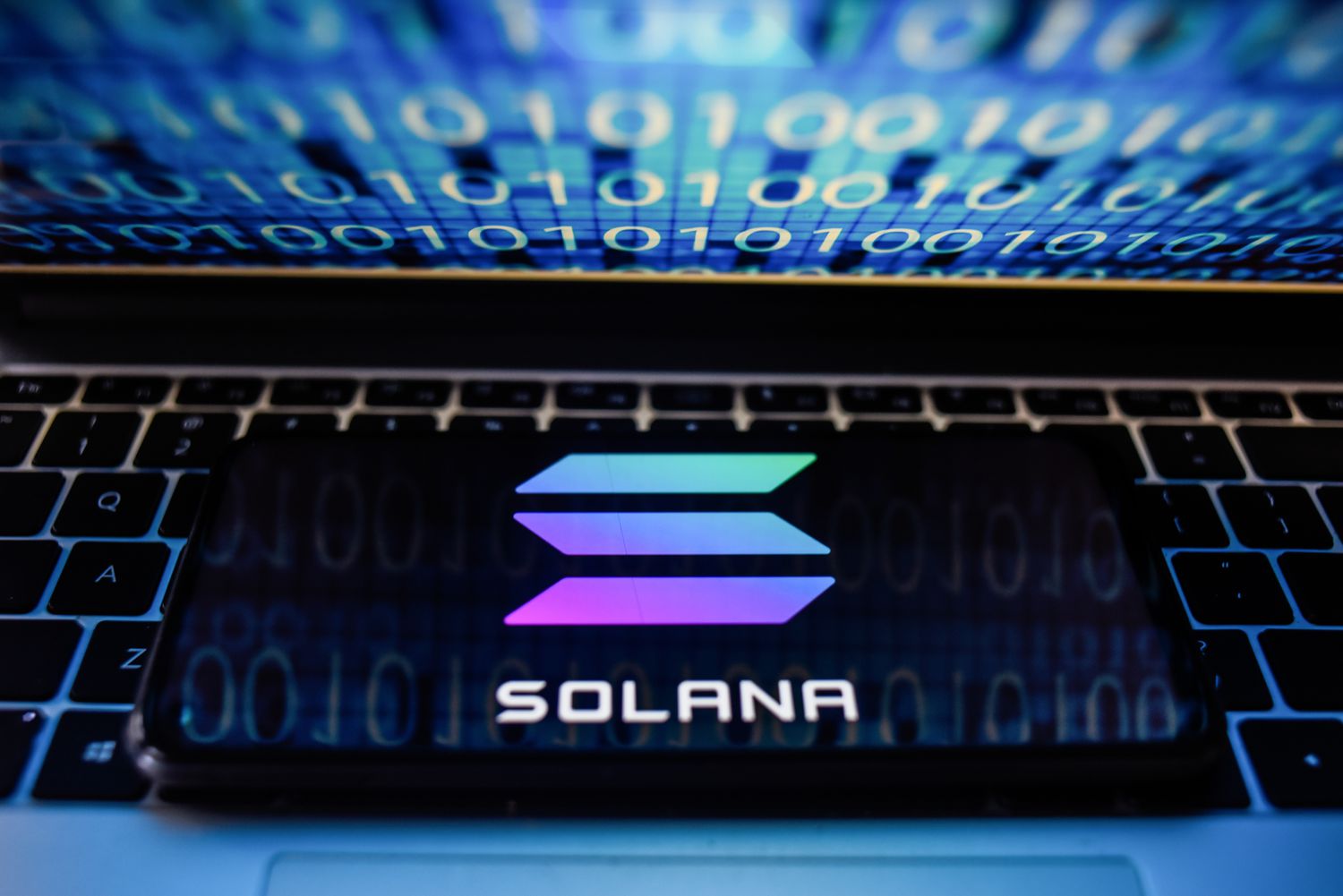In a stunning development for the blockchain ecosystem, Solana has reportedly captured more Ethereum outflows than all other chains combined over the past 365 days, according to a recent post by @solananew on X. This milestone, facilitated through the cross-chain protocol Wormhole, underscores Solana’s growing dominance and its appeal to users seeking faster, cheaper, and more scalable blockchain solutions. Let’s dive into the details of this phenomenon, explore what’s driving this shift, and assess its implications for the future of decentralized finance (DeFi) and blockchain technology.
The Rise of Solana: A Liquidity Black Hole
On April 28, 2025, @solananew shared a striking statistic: Solana had attracted more Ethereum outflows than all other blockchain networks combined over the past year, as tracked by Wormhole, a leading cross-chain bridge protocol. The accompanying chart highlighted the scale of this movement, with Ethereum outflows to Solana totaling $7,804,695,781—representing 81% of the total outflows across all chains. In contrast, other chains like BNB Chain ($1,137,105,795) and Arbitrum ($597,391,467) trailed far behind.
This data prompted enthusiastic reactions on X, with @mewsolanamew dubbing Solana a “liquidity black hole” and @MacSFAI2025 calling it an “absolute powerhouse.” The sentiment reflects Solana’s growing reputation as a go-to blockchain for users and developers alike, thanks to its high transaction throughput and low costs. But what exactly is driving this massive shift of capital from Ethereum to Solana?
Why Solana? Speed, Scalability, and Cost Efficiency
Solana’s appeal lies in its technical advantages over Ethereum, which have been well-documented in blockchain comparisons. Solana processes around 800 transactions per second (TPS) in real-world conditions, significantly outpacing Ethereum’s 280 TPS. This speed is largely due to Solana’s hybrid consensus mechanism, which combines Proof of Stake (PoS) with Proof of History (PoH), enabling faster transaction confirmations without sacrificing decentralization.
Moreover, Solana’s transaction fees are a fraction of Ethereum’s. While Ethereum’s gas fees fluctuate with network demand—ranging from less than $1 to double digits—Solana maintains consistently low fees, averaging around $0.00025 per transaction. For users engaging in high-frequency transactions, such as trading NFTs or participating in DeFi protocols, these cost savings are a game-changer. As one X user, @lewylupo, asked for a simple explanation of the news, @solananew responded succinctly: “Price higher.” The influx of capital to Solana is likely driving up the value of its native token, SOL, as demand for the network grows.
Solana’s ecosystem has also seen rapid growth in areas like NFTs and gaming, where its low fees and fast transactions make it an attractive alternative to Ethereum. While Ethereum still dominates the NFT market with platforms like OpenSea, Solana is gaining traction for micro-NFTs and high-frequency transactions, where Ethereum’s gas fees can become prohibitive. Additionally, Solana’s ecosystem has been bolstered by initiatives like the “Onchain Holiday” shopping event, which allows users to spend stablecoins and memecoins on merchandise—a sign of its expanding real-world utility.
The Role of Wormhole in Cross-Chain Transfers
The massive outflows from Ethereum to Solana wouldn’t be possible without Wormhole , a cross-chain protocol that enables seamless token transfers between blockchains. Launched in October 2020 as a hackathon project, Wormhole initially focused on creating a bi-directional token bridge between Ethereum and Solana. Since then, it has evolved into a robust messaging protocol, supporting native token transfers across multiple chains, including Solana, Ethereum, Arbitrum, Optimism, and Base.
Wormhole’s credibility is bolstered by its unconditional approval from Uniswap’s Bridge Assessment Committee, which evaluated six different cross-chain bridges and deemed Wormhole the most secure for cross-chain deployments. This endorsement, combined with Wormhole’s integration of Circle’s Cross-Chain Transfer Protocol (CCTP), has made it a trusted choice for developers and users moving assets between blockchains. Wormhole’s ability to transfer tokens without liquidity fragmentation—via its Native Token Transfer (NTT) mechanism—has further streamlined the process, making it easier for Ethereum users to migrate their assets to Solana.
Ethereum’s Challenges and Solana’s Opportunity
Ethereum, despite its first-mover advantage and dominance in DeFi, has faced challenges that have driven users to explore alternatives like Solana. Ethereum’s transition to Proof of Stake (PoS) with “The Merge” in 2022 improved its energy efficiency and scalability, but it hasn’t fully resolved the issues of high gas fees and slower transaction speeds. Layer-2 scaling solutions like Arbitrum and Optimism have helped, but for many users, Solana’s native performance offers a more immediate and cost-effective solution.
Historically, Ethereum has been the hub for multi-chain activities, with bridges like Polygon facilitating cross-chain transfers. However, Solana’s rapid ecosystem growth—particularly in NFTs, gaming, and DeFi—has shifted the narrative. A report from Electric Capital, cited on Solana’s official website, notes that 81% of all decentralized exchange (DEX) transactions now come from the Solana ecosystem, a testament to its growing adoption among developers and users.
Solana hasn’t been without its challenges, though. In February 2024, the network experienced a significant outage, leading to $3 million in exchange-traded product (ETP) outflows as investors grew wary of its reliability. However, the latest data suggests that Solana has not only recovered but has emerged stronger, capitalizing on Ethereum’s pain points to attract a flood of new capital.
What This Means for the Future
The record-breaking Ethereum outflows to Solana signal a broader trend in the blockchain space: users and developers are increasingly prioritizing performance and cost over legacy dominance. Solana’s ability to handle thousands of transactions per second while keeping fees low positions it as a formidable competitor to Ethereum, particularly in high-growth areas like DeFi, NFTs, and gaming.
For Ethereum, this shift is a wake-up call. While it remains the leader in overall market share and developer activity, it must continue to innovate to retain users. Upcoming upgrades, such as further improvements to Layer-2 scaling and sharding, could help Ethereum close the gap in performance. However, Solana’s momentum shows no signs of slowing, and its ecosystem continues to expand with new projects and initiatives.
The success of Wormhole in facilitating these transfers also highlights the importance of secure and efficient cross-chain infrastructure. As the blockchain industry moves toward a multi-chain future, protocols like Wormhole will play a critical role in ensuring interoperability between networks, allowing users to move assets seamlessly and securely.
Conclusion
Solana’s record-breaking Ethereum outflows over the past year mark a pivotal moment in the blockchain industry. Driven by its superior speed, scalability, and cost efficiency, Solana has emerged as a “liquidity black hole,” attracting billions of dollars in capital from Ethereum via Wormhole. While Ethereum remains a powerhouse in the space, Solana’s rise underscores the growing demand for high-performance blockchains that can meet the needs of modern DeFi and NFT users.
As the competition between these two blockchain giants heats up, the winners will likely be the users and developers who benefit from innovation, lower costs, and faster transactions. For now, Solana’s star is shining brighter than ever, and the blockchain world is taking notice. 🚀




